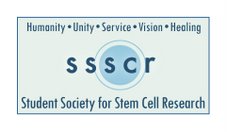Parkinson's researchers focus on 'designer' cells
Staff report
October 11, 2007
University of Florida regenerative medicine researchers have
received a $1.6 million federal grant to study whether "designer"
cells can be used to rescue the brain from Parkinson's and other
neurological diseases.
Using cell cultures and a rodent model of Parkinson's disease,
scientists want to study whether stemlike cells from mice and from
adult human brains and bone marrow can be adapted to deliver a
potentially protective protein to the brain.
"Certain cells derived from brain or bone marrow may have the
potential to be engineered to release therapeutic factors in
Parkinson's disease," said Dennis Steindler, Ph.D., principal
investigator of the five-year grant and executive director of the
Evelyn F. and William L. McKnight Brain Institute. "The possibility
of using a person's own cells to slow or perhaps even halt the course
of devastating neurological disorders offers a tremendous advantage,
because there is less chance the therapy will be rejected."
The new, five-year study is funded by the National Institute of
Neurological Disorders and Stroke. Scientists want to dose the brain
with engineered cells capable of producing growth factors that have
shown promise for replacement and preservation of neurons.
The idea is to nourish and protect brain cells that produce dopamine,
a substance essential for normal movement that is depleted in
Parkinson's patients.
About 1.5 million Americans currently have Parkinson's disease,
according to the National Parkinson Foundation. The condition usually
develops after the age of 65.
"It takes a great deal of dopamine-producing brain cells to die
before symptoms appear," said Ron Mandel, Ph.D., a professor of
neuroscience in the College of Medicine. "Our strategy is to protect
these cells to slow or halt the progression of the disease."
Scientists will first genetically engineer the ability to produce two
particular growth factors into immature human cells that haven't
quite finished developing, and then introduce the modified cells into
the models of Parkinson's disease.
"The idea is to obtain a few cells of the needed type from a patient,
grow those cells, modify them to produce growth factors that protect
at-risk dopamine neurons, and then put them back in the patient in a
reasonable time," said Kenneth Berns, M.D., Ph.D., a collaborator on
the project and director of the UF Genetics Institute. "It will be a
challenge, but it will be a terrific application of human gene
therapy in adult human stem and progenitor cells as well as
differentiated cells."
Also collaborating on the project are Lung-Ji Chang, Ph.D., a
professor of molecular genetics and microbiology, and Eric Laywell,
Ph.D., an assistant professor of anatomy and cell biology.
http://www.sun-
fljjpsparkinsons100
«¤»¥«¤»§«¤»¥«¤»§«¤»¥«¤»«¤»¥«¤»§«¤»¥«¤»§«¤»¥«
¯¯¯¯¯¯¯¯¯¯¯¯¯¯¯¯¯¯¯¯¯¯¯¯¯¯¯¯¯¯¯¯¯¯¯¯¯¯¯¯¯¯¯¯
StemCells subscribers may also be interested in these sites:
Children's Neurobiological Solutions
http://www.CNSfoundation.org/
Cord Blood Registry
http://www.CordBlood.com/at.cgi?a=150123
The CNS Healing Group
http://groups.yahoo.com/group/CNS_Healing
____________________________________________
«¤»¥«¤»§«¤»¥«¤»§«¤»¥«¤»«¤»¥«¤»§«¤»¥«¤»§«¤»¥«
¯¯¯¯¯¯¯¯¯¯¯¯¯¯¯¯¯¯¯¯¯¯¯¯¯¯¯¯¯¯¯¯¯¯¯¯¯¯¯¯¯¯¯¯
Change settings via the Web (Yahoo! ID required)
Change settings via email: Switch delivery to Daily Digest | Switch format to Traditional
Visit Your Group | Yahoo! Groups Terms of Use | Unsubscribe
__,_._,___










